您们的需要 我们的专注
Your Needs Our Focus
财经快讯
-
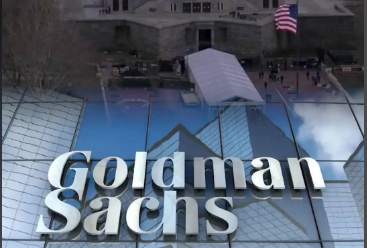 查看详情
查看详情這是高盛眼中“美國經濟和市場的最大風險”
高盛指出,當前美國市場與經濟面臨的核心風險已不再是私人部門的金融過度行為,而是日益嚴峻的公共部門債務問題與高企的資產估值。 7月29日,高盛首席經濟學家Jan Hatzius發布報告指出,盡管房地產估值處於高位,但私人部門(包括家庭和企業)的金融失衡風險仍然較低。相比之下,公共部門的財政狀況構成了更顯著的中長期威脅。 報告警示,如果債務及其利息支出增長失控,美國將面臨嚴峻的財政可持續性挑戰。這一潛在風險可能推高利率,收緊整體金融環境,並對經濟增長構成拖累。 財政可持續性:美國中長期最大挑戰 報告明確指出,美國在中長期面臨的最大風險或許在於財政可持續性。 如果國債規模及相應的利息支出增長到足夠大的程度,屆時僅僅為了穩定債務與GDP的比率,就將要求政府長期維持大規模的財政盈余,而這在政治上是難以持續的。 雖然難以預知市場何時會對此問題產生更嚴重的擔憂,但任何由此產生的利率上行壓力,都可能收緊更廣泛的金融環境,對經濟增長構成拖累。 高盛特別強調,在資產估值本已高企的起點上,這種沖擊的破壞性可能更大。 高盛指出,盡管利率高企且地緣政治不確定性加劇,美國股市估值依然維持在自上世紀90年代末以來的最高水平。 該行的投資組合策略師模型顯示,模型預測的合理市盈率(P/E)為20.7倍,而當前實際水平為22.4倍,遠高於1990年以來15.9倍的平均值。 此外,高盛的投機交易指數也指向當前風險升高,其中“Meme股”交易等現象便是市場風險偏好尤為高漲的信號之一。 房地產高價無虞,私人部門債務風險可控 雖然高盛的監控指標顯示房價帶來了一定風險,但其經濟學家團隊對此並不十分擔憂。 他們認為,當前的高房價主要反映了獨棟住宅持續的供需失衡,而非寬松的貸款標準或投機性購買——後者才會引發真正的金融穩定問題。 報告預計,獨棟住宅的短缺狀況可能會持續一段時間,這限制了房價大幅下跌的風險。 同時,數據顯示寬松的信貸並非此輪房價上漲的主要推手,當前抵押貸款發放時的借款人信用評分中位數仍略高於疫情前幾年的水平。 在家庭債務方面,報告回應了兩大關切: 首先,對於儲蓄率長期過低的擔憂,高盛模型表明,低儲蓄率歸根到底還是要看家庭財富水平等基本面因素。 其次,對於消費信貸違約率上升所揭示的金融脆弱性,報告認為這主要反映了過去“無意中的風險性放貸”,而非家庭財務狀況的普遍惡化,且目前違約率已經趨於平穩。 在企業債務方面,盡管近年來企業利息支出已大幅上升,但其後果至今看來仍然有限。 高盛估計,對到期債務進行再融資只會在未來兩年內增加3%的利息支出,這一預測遠低於其在2023年估算的7%,主要原因是大量債務已在較高利率環境下完成再融資,且企業債利率近期已大幅下降。 風險提示及免責條款 市場有風險,投資需謹慎。本文不構成個人投資建議,也未考慮到個別用戶特殊的投資目標、財務狀況或需要。用戶應考慮本文中的任何意見、觀點或結論是否符合其特定狀況。據此投資,責任自負。
2025-07-30 -
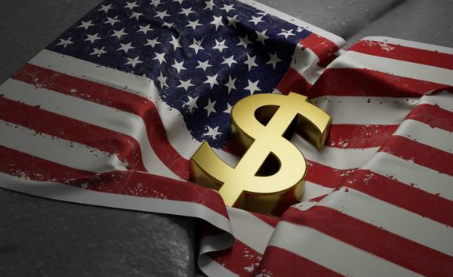 查看详情
查看详情特朗普關稅攪動匯市,瑞銀停止向客戶推銷外匯衍生品
瑞銀已要求員工減少復雜外匯衍生品的銷售。 7月29日周二,媒體援引三位知情人士消息稱,瑞銀已通知其客戶經理,停止向多數客戶推銷一種名為“區間目標利潤遠期合約”(簡稱RTPF)的復雜外匯衍生品。 背後原因是特朗普4月初宣布的高額關稅政策,引發美元大幅波動,導致不少瑞銀客戶投資的RTPF產品蒙受巨大虧損,這也迫使瑞銀緊急叫停這類產品的銷售,甚至賠償了100多位客戶,以安撫情緒和挽回聲譽,外界對這些產品的銷售行為和是否適合客戶的質疑正不斷升溫。 RTPF:收益有限、虧損無限,僅適合高風險偏好者 RTPF是專門為高凈值客戶設計的結構性外匯產品,其運作原理類似這樣——客戶與銀行約定,只要美元兌瑞郎的匯率保持在某個區間,就以一個固定利率交換貨幣。如果匯率脫離這個區間,合同仍要強制執行。結果是客戶可能以極不利的匯率,持續換匯,產生大額虧損。 這種產品原本就具有高風險,本應只銷售給專業投資者,目前在英國、西班牙以及多個亞洲市場都受到限制或嚴格監管。但瑞銀的部分客戶並非“高手”,甚至有客戶在不了解風險的情況下,用抵押房產的錢來投資,風險極大。 一位瑞銀客戶透露,他的客戶經理最近強調,這類高風險結構性外匯產品(如RTPF)現在應僅限於“最具專業水準”的投資者,並需對產品適配性進行更嚴格審查。 這位客戶表示,以往積極推銷產品的客戶經理如今變得謹慎許多:“這次,他甚至沒帶任何資料,只是來‘聊聊’。他說他們已接到通知,不再主動推銷這些產品了。” 另一位知情人士補充稱,瑞銀仍在銷售這類產品,但規模大幅縮減。 在特朗普關稅宣布後,美元迅速貶值,很多RTPF合同觸發虧損條件,瑞銀的客戶被迫按極差匯率持續換匯,部分客戶蒙受“難以預期”的高額損失。 瑞銀被迫啟動危機處理機制,停止向多數客戶推銷這類產品,向100多個客戶支付“善意補償金”,啟動內部審查、風險評估培訓,檢討至少6位客戶經理的銷售行為,並從今年年初開始陸續與受影響客戶取得聯系。 風險提示及免責條款 市場有風險,投資需謹慎。本文不構成個人投資建議,也未考慮到個別用戶特殊的投資目標、財務狀況或需要。用戶應考慮本文中的任何意見、觀點或結論是否符合其特定狀況。據此投資,責任自負。
2025-07-29 -
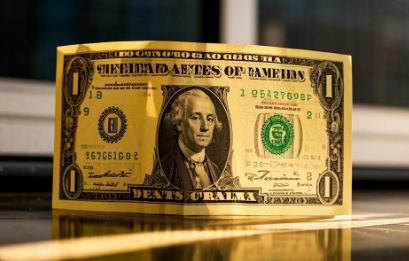 查看详情
查看详情全世界被打臉!關稅之下,為什麽滯脹沒來,美元還跌了?
特朗普關稅政策的實際經濟影響與年初預測截然不同,華爾街被啪啪打臉。 洛克菲勒國際的董事長兼著名投資人Ruchir Sharma近日撰文指出,盡管特朗普政府大幅提高關稅,美元不僅未見預期升值,反而遭遇了自20世紀70年代初以來半年最嚴重的下跌。 同時,預期中的“滯脹"效應——經濟增長放緩伴隨通脹上升——在宏觀數據中並未明顯顯現。關稅收入以年率3000億美元的速度增長,約為去年同期的四倍,但美國經濟依然保持韌性。 文章稱,人工智能投資熱潮、政府財政刺激以及其他宏觀因素共同抵消了關稅政策的負面影響。這一現象挑戰了傳統經濟理論,表明復雜經濟體系很少僅受單一因素主導,即使是特朗普關稅這樣的重大沖擊。 預期落空:美元走弱而非走強 年初時,幾乎所有經濟學家、投資者和企業高管都達成一致:特朗普的關稅政策將強化美元並引發滯脹。經濟學家估計,關稅稅率每上升一個百分點,將使美國經濟增長降低0.1%,同時通脹率上升0.1%。然而,實際情況卻大相徑庭。 文章指出,美國有效關稅率已從2.5%上升至15%,但美元不升反降,出現了自1970年代初以來半年內最嚴重的下跌。這一意外走勢現在被歸因於美元在年初時的歷史性高估。許多外國投資者曾大量持有美元資產,但近來他們開始對這些風險進行對沖,並更多地投資美國以外地區。 多個國家正成為日益具吸引力的資金避風港,部分原因是關稅威脅促使這些國家推動經濟改革並與非美國夥伴達成貿易協議,進一步分散了全球資本流向。 人工智能熱潮抵消關稅負面效應 Sharma認為,關稅政策未能產生預期的滯脹效應,主要原因在於多重積極因素的對沖作用,尤其是人工智能熱潮和政府持續的財政刺激。 自今年1月以來,科技巨頭在人工智能基礎設施上的預計年度支出已增加600億美元,達到3500億美元。眾多中小型企業也爭相搭乘這一浪潮,進一步促進了經濟增長。這種普遍的樂觀情緒有效中和了貿易政策不確定性可能帶來的投資信心下滑。 Sharma寫道:“人工智能驅動的樂觀情緒通過保持寬松的金融環境來提振增長,即使在利率較高的情況下也是如此。”根據美聯儲的一項新指數,如果不是因為股市(主要受人工智能股票推動)繼續上漲,當前金融環境將處於中性而非寬松狀態。 企業稅收減免緩沖關稅成本 特朗普政府的減稅政策使美國企業更容易吸收大部分關稅成本,而非將其全部轉嫁給消費者。根據Sharma的分析,特朗普的“大漂亮法案”預計將在今年為美國企業節省約1000億美元,2026年將超過這一數字,主要以稅收減免形式呈現。 盡管如此,關稅的負面經濟影響確實開始顯現,主要體現在家用電器、體育用品和玩具等產品價格上漲。據經濟學家估計,外國出口商實際上承擔了20%的關稅成本——遠高於特朗普第一任期時的比例,而剩余80%則大致平均分攤給美國企業和消費者。 經濟復雜性超越單一因素分析 整體通脹率仍然受到房租下降以及二手車和能源等其他商品價格下跌的抑制。這些價格下降與關稅無關;二手車價格仍在從疫情期間供應中斷造成的高位回落。Sharma寫道: “經濟學家對關稅的預測並非完全錯誤。滯脹可能最終會出現,特別是如果平均有效稅率繼續攀升。但到目前為止,即使大幅提高的關稅稅率也不足以壓倒支撐增長和控制通脹的更大力量。” Sharma認為,當前情況某種程度上重演了2023年的場景。當時,許多人預期美聯儲加息將大幅減緩美國經濟增長,卻發現其影響被人工智能支出熱潮和美國政府持續的財政支持所抵消。 這位著名投資人的核心觀點是:全球對特朗普的過度關註放大了簡單經濟模型的局限性——即認為某一引人註目的因素A必然導致結果B。然而,復雜的經濟體系很少僅受單一因素塑造,即使是像特朗普關稅這樣的重大沖擊也不例外。 風險提示及免責條款 市場有風險,投資需謹慎。本文不構成個人投資建議,也未考慮到個別用戶特殊的投資目標、財務狀況或需要。用戶應考慮本文中的任何意見、觀點或結論是否符合其特定狀況。據此投資,責任自負。
2025-07-28 -
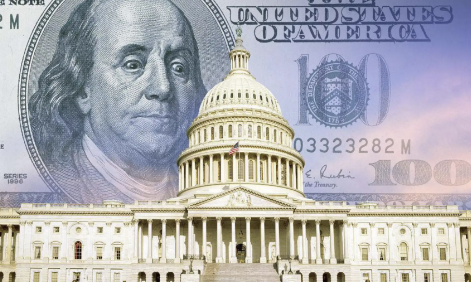 查看详情
查看详情特朗普越是施壓鮑威爾,美聯儲越不可能降息?
Mackintosh通過對市場數據和政策機制的深入分析,揭示了一個看似矛盾的現象:特朗普越是公開施壓美聯儲,反而越難達成其降息目標。文章認為,這場爭端本質上反映了制度獨立性與民粹主義之間的根本分歧。 文章強調,這場沖突的核心在於兩種截然不同的治理理念碰撞。特朗普的觀點體現了"人民的聲音就是上帝的聲音"這一民粹主義理念,而美聯儲則恰恰相反,其設計初衷就是要獨立於日常政治之外。 文章深入分析了這場爭端背後的制度性問題。Mackintosh認為,白宮與美聯儲之間的分歧"在最高層面是一場關於制度與民粹主義的較量",核心問題是專家機構能否比民選政客更好地管理經濟政策。 當前期貨市場顯示,下周降息的可能性幾乎為零,9月份降息的概率約為60%。 市場反應揭示真實成本 據Mackintosh統計,在特朗普呼籲降息3個百分點的第二天,紐約聯儲衡量的10年期期限溢價升至0.84個百分點,高於他在4月份類似攻擊後回落時的0.6個百分點,更遠高於去年選舉前一個月的零水平。 "政治越多地介入利率,通脹就越可能波動,投資者對長期投資就會要求更多補償。" 這一歷史案例的啟示是深刻的:當市場相信貨幣政策制定者能夠獨立於政治壓力時,他們對未來通脹的擔憂會減少,從而願意接受更低的長期利率。這正是特朗普想要達到的目標,但他的施壓策略卻可能產生相反的效果。 Mackintosh還在文中糾正了特朗普關於降息與抵押貸款關系的誤解。特朗普抱怨說:"人們買不起房子,因為這個家夥(鮑威爾)是個笨蛋,他把利率保持得太高,可能是出於政治原因。" 文章指出,"美聯儲利率和抵押貸款利率之間在長期內存在松散聯系,但它們可能朝相反方向大幅波動,特別是當市場認為美聯儲在犯錯誤時。" 通脹擔憂與政策考量 特朗普政府與美聯儲雙方在關稅經濟效應上存在分歧,政府預期關稅對價格影響甚微,而美聯儲"因為在前總統拜登時期錯過通脹繁榮而吃過苦頭",正在等待觀察關稅是否會推高價格,然後才會重啟降息。 不過,他也承認貨幣政策並非科學,完全有理由支持從下周開始降息。關鍵在於,降息的理由應該基於經濟數據而非政治壓力。文章列舉了支持降息的經濟指標: 讓專業人士論證降息合理性 Mackintosh在文中警告說,如果特朗普試圖在鮑威爾明年5月任期結束前以理由解職他,或者如果一些共和黨人改變管理美聯儲的法律,讓其屈服於國會壓力,都會產生同樣的問題。投資者會預期政客們走捷徑,偏好接受一點通脹來推動增長,特別是在選舉前,這將推高債券收益率。 "特朗普對鮑威爾延遲降息感到沮喪顯然是可以理解的。但與其攻擊美聯儲獨立性帶來的更高債券收益率相比,還不如等待。" 風險提示及免責條款
2025-07-25 -
 查看详情
查看详情“投資換15%關稅”!特朗普的“關稅樣板”已經明牌了
美日貿易協定為其他國家提供談判模板,但也加大了它們在8月1日“關稅大限”前達成協議的壓力。 據央視新聞,日本與美國就關稅問題達成一致,美方將向日本征收15%的關稅,並增加進口美國大米。該協議還包括日本向美國投資5500億美元的承諾。 根據該協議,美國還要求日本購買80億美元的美國商品,包括玉米、大豆和化肥,100架波音飛機以及更多國防設備采購。 分析指出,盡管協議缺乏傳統文本細節,主要通過官方聲明和社交媒體公布,但它為歐盟和韓國等夥伴樹立了“模板”,促使它們加速談判,以爭取低於威脅水平的關稅,並通過類似投資和采購承諾換取讓步。 美日協議確立“投資換關稅”模式?歐盟可能鎖定15%稅率 美國與日本的協議將大多數日本出口關稅設為15%,低於特朗普此前威脅的25%,並創新性地納入投資承諾。 白宮表示,日本銀行和金融機構將向某個投資基金註資5500億美元,日本首相石破茂稱,該基金通過貸款和擔保形式運作。 美國商務部長盧特尼克還補充稱,投資基金還將涉及股權投資,美國將主導項目選擇和執行,利潤分配為美國納稅人90%、日本10%。 特朗普第一任期內駐日大使、共和黨參議員Sen. Bill稱其為“前所未有的結構”: ““他們在制定一項龐大的融資方案。所以這不是外國投資,而是一個融資方案,我們將挑選最好的(項目),並讓人們競爭這些項目。” 本周三,兩名特朗普政府的高官都在媒體訪談中暗示,為了促成貿易協議,歐盟應該“學日本”,以投資等融資形式換取美方更優惠的關稅待遇。 有知情人士向媒體表示,在美國與日本達成協議後,歐洲官員更容易接受他們可能也征收15%基準關稅的想法。與日本達成的協議表明,15%的關稅水平可以適用於大多數美國主要貿易夥伴。 華爾街見聞此前提及,媒體援引知情者的消息稱,美國和歐盟接近達成協議,據該協議,美方將對歐盟征收15%的關稅,和美國同日本達成的貿易協議類似。 20%的稅率或成“基準”,歐盟韓國加快談判步伐 專家觀點認為,美日貿易協議設定了“禁止性水平以下”的關稅基準。 Center for Strategic and International Studies高級顧問、前商務部官員William Reinsch表示: “更廣泛地說,許多外國政府的目標是將這一數字控制在禁止水平以下——25%到35%會阻止大多數貿易。如果將其控制在20%以下,企業就能應對。” 多位地緣政治顧問預計,歐盟和韓國將加緊努力達成協議,特別是在汽車領域。 Beacon Policy Advisors高級分析師Owen Tedford預計,在8月1日之前的幾天裏,協議公布的步伐可能會加快。 Owen Tedford分析表示: “如果我是歐盟,10%的希望已經破滅,15%是重點;如果我能復制日本協議,那將是勝利。” 行業關稅談判空間顯現 分析師特別關註日本在汽車出口行業關稅方面成功談判的減免。這些行業關稅一直是許多貿易談判的主要癥結所在,包括已經實施的汽車關稅、鋁鋼50%關稅,以及待定的制藥、半導體等領域關稅。 日本成功將汽車出口關稅從25%降至15%,凸顯了特朗普政府在該領域的靈活性,也給其他國家提供了借鑒。 前白宮和商務部官員、Crowell Global Advisors董事總經理Monica Gorman分析指出,這表明特朗普政府願意就行業關稅進行談判: “包括歐盟在內的其他國家幾乎肯定會註意到這一點。” Reinsch還補充稱,歷史先例也支持這一靈活性:特朗普在其首任期內計劃對鋼鋁征收關稅,後來通過配額和雙邊協議降低。 盡管協議強調“購買美國”和投資承諾,但貿易資深人士持謹慎態度。 Reinsch表示,此類承諾的過往歷史顯示“數字從大變小”,許多為既定計劃的再包裝,對實際經濟影響有限。白宮將這些視為重振美國產業的工具,但分析師仍等待更多細節以評估可持續性。 風險提示及免責條款 市場有風險,投資需謹慎。本文不構成個人投資建議,也未考慮到個別用戶特殊的投資目標、財務狀況或需要。用戶應考慮本文中的任何意見、觀點或結論是否符合其特定狀況。據此投資,責任自負。
2025-07-24 -
 查看详情
查看详情香港金管局總裁余偉文:對穩定幣的降溫力度仍需加強
7月23日,香港金管局總裁余偉文發文再談穩定幣。余偉文稱,一個月以來市場和社會上對穩定幣的討論熱度及降溫力度仍需加強,並談及如何按照穩妥、可持續的原則落實《穩定幣條例》。 余偉文表示,有必要防範市場和輿論對於穩定幣的過度炒作,最近有以下一些現象值得關註。一是過度概念化。余偉文透露,以香港的經驗為例,至今已經有數十家機構主動接觸金管局團隊,有的明確表示有意申請穩定幣牌照,有的屬於初步探路性質。但很多只停留在概念階段,如提出要提升跨境支付效率、支持Web3.0發展、提升外匯市場效率等願景,但缺乏實際的應用場景,無法提出切實可行的具體方案和落實計劃,更遑論具備管控風險的意識和能力。一部分能提供應用場景的,機構本身卻缺乏發行穩定幣的技術和管控各類金融風險的經驗和能力。余偉文建議,參與穩定幣可以有多種模式,對於這類機構而言,較實際的做法似乎是與其他穩定幣發行機構合作,提供應用場景,而非追求作為發行主體。 另一更值得關註的是泡沫化趨勢。余偉文稱,近期隨著穩定幣概念的熱炒,市場出現了過度亢奮的情緒,一些上市公司,不管本業與穩定幣或者數字資產是否相關,只要宣稱有意開拓穩定幣業務,股價即應聲上漲、股票交易量大增之余,公司知名度亦得以大大提升。 余偉文重申早前香港金管局已明確表明,在初階段只會批出數個穩定幣牌照,並建議投資者在消化市場所謂“利好”消息時保持冷靜和獨立思考。 余偉文表示,《穩定幣條例》通過以後,香港金管局立馬落實條例的監管和反洗錢兩份指引征求市場意見,目前正根據反饋意見適當調整指引的要求,爭取在7月底公布。預期最終的定稿與咨詢草稿不會有太大的調整,而鑒於國際監管的共同關註,在反洗錢方面會訂立更嚴謹的要求,盡量減低穩定幣成為洗錢工具的風險,務求讓香港穩定幣市場有序健康發展。 此外,余偉文稱,將於下周公布“穩定幣發行人發牌制度”的摘要說明,文件會闡述香港金管局接受和處理牌照申請的安排。 風險提示及免責條款 市場有風險,投資需謹慎。本文不構成個人投資建議,也未考慮到個別用戶特殊的投資目標、財務狀況或需要。用戶應考慮本文中的任何意見、觀點或結論是否符合其特定狀況。據此投資,責任自負。
2025-07-23 -
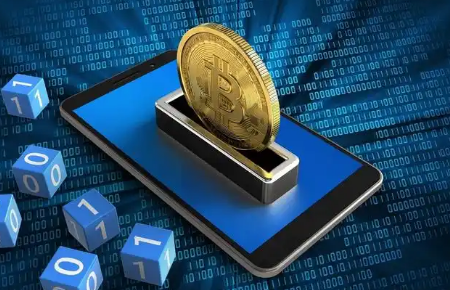 查看详情
查看详情加速擁抱數字資產!摩根大通探索數字貨幣抵押貸款業務
摩根大通考慮接受客戶用加密貨幣作為抵押來申請貸款,這是美國最大銀行開始認可數字資產邁向主流金融體系的一大信號。 7月22日周二,媒體援引知情人士消息透露,摩根大通最快可能於明年開始直接接受比特幣、以太坊等加密資產作為貸款抵押。目前相關計劃仍在推進中,尚可能調整。相比之下,高盛等競爭對手尚不接受加密貨幣作為抵押品。 這一政策轉變對於摩根大通首席執行官戴蒙而言意義重大。八年前,戴蒙將比特幣斥為"欺詐",稱其"最終會崩潰",只對毒販和殺手有用。知情人士表示,Dimon早年對比特幣的激烈批評已經疏遠了一些通過加密資產獲利或長期看好其潛力的潛在客戶。 不僅是摩根大通,整個傳統金融行業正加快與加密資產的融合步伐。隨著特朗普第二屆政府傾向於比拜登政府更寬松的監管政策,華盛頓對加密貨幣的態度轉變正推動更多銀行擁抱數字資產。 摩根大通CEO立場轉變 據知情人士透露,戴蒙此前猛烈抨擊比特幣,甚至揚言炒幣的交易員會被開除,這令一些通過加密貨幣致富或長期看好其價值的潛在客戶感到反感。 但最近,戴蒙的表態已有所軟化。今年5月他表示:"我不認為你應該吸煙,但我捍衛你吸煙的權利。我捍衛你購買比特幣的權利。去做吧。" 摩根大通此前已經開始擁抱加密貨幣,計劃允許以加密貨幣ETF作為抵押進行貸款。若未來接受直接的加密貨幣資產作為抵押,將是更進一步的突破。 金融機構加速布局,監管環境提供助力 這一趨勢的背後,是美國監管態度的松動。特朗普第二屆政府傾向於采取比拜登政府更寬松的監管政策,這促使更多銀行重新評估其數字資產策略。摩根士丹利正在考慮通過ETrade平臺提供加密貨幣交易服務。 此外,美國國會近期也釋放出積極信號。美國眾議院上周通過了穩定幣監管法案,這是美國國會首次批準的重要加密立法。大型銀行對該法案表示歡迎,認為這將使它們更容易開展數字資產業務。與比特幣等不以基礎資產支持的加密貨幣不同,穩定幣與美元等資產掛鉤。 技術與合規挑戰仍需破解 盡管市場情緒回暖,銀行在推進加密貸款業務時仍面臨現實難題。 一方面,加密資產可能被用於非法交易,這使銀行需加強反洗錢和合規機制。另一方面,若客戶違約,如何清算加密資產也是一大技術障礙。 像大多數美國銀行一樣,摩根大通不在其資產負債表上持有加密貨幣,因此,摩根大通更可能與第三方合作,由其代為托管客戶的加密資產。像加密交易平臺Coinbase等公司就提供此類服務。 值得一提的是,盡管摩根大通過去一直不願涉及比特幣這類主流加密貨幣,但在更廣義的數字資產領域它其實非常活躍,早在2019年就推出了業內最早的銀行支持型數字貨幣之一。 風險提示及免責條款 市場有風險,投資需謹慎。本文不構成個人投資建議,也未考慮到個別用戶特殊的投資目標、財務狀況或需要。用戶應考慮本文中的任何意見、觀點或結論是否符合其特定狀況。據此投資,責任自負。
2025-07-22 -
 查看详情
查看详情低風險+高收益!中國公司債券ETF數量飆升,半年增6倍
中國債券ETF市場正經歷爆炸式增長。 7月21日,據彭博數據顯示,中國債券ETF管理資產規模在短短一年半內實現了5倍增長,從2024年初的100億美元飆升至今年6月底的逾500億美元。這一增長速度在全球固收ETF市場中極為罕見。 公司債券ETF在這輪增長中表現最為突出,數量較去年底激增6倍,已占整個債券ETF市場一半以上,成為推動整體規模擴張的主要動力。 這一增長熱潮的背後,是投資者對低成本、高流動性產品的強烈需求。公司債ETF不僅提供了多元化投資組合的優勢,還能讓投資者接觸到收益率更高的企業債券,同時規避直接投資單一債券的違約風險。 政策支持,科技債券ETF異軍突起 政策層面的支持進一步推動了這一趨勢。 央行今年推出支持科技企業融資的專項政策,帶動科技債券發行激增,相關ETF產品應運而生。僅今年7月就有10只科技債券ETF上市交易。 在年初推出的8只科技債ETF中,有5只躋身6月份亞洲資金流入最多的前十大基金榜單。華夏上證基準做市公司債ETF以吸引20億美元資金位居榜首,成為市場明星產品。 華泰證券固收分析師仇文竹對媒體表示:"去年之前投資者很少談論債券ETF,但隨後我們開始看到需求增長。今年債券ETF已經成為市場熱點。" 此外,部分債券ETF還具備了新的功能。根據6月份啟動的試點計劃,一些債券ETF可以被用作短期借款的抵押品,這進一步提升了它們的吸引力。 仇文竹補充道,私募基金利用這類產品擴大在銀行間市場的投資,銀行則借此分散投資於公司債和可轉債,而券商自營盤則青睞其靈活性和低成本。 然而,這股投資狂潮也引發了市場對潛在風險的擔憂。有分析認為,如果債券ETF本身成為一種過熱交易,可能會加劇其底層資產的價格波動,導致超大規模的買入或賣出。 “ETF市場的擴張很可能導致整個信用市場波動性的增加,”財通證券分析師孫彬彬等人在一份7月8日的報告中寫道。 風險提示及免責條款 市場有風險,投資需謹慎。本文不構成個人投資建議,也未考慮到個別用戶特殊的投資目標、財務狀況或需要。用戶應考慮本文中的任何意見、觀點或結論是否符合其特定狀況。據此投資,責任自負。
2025-07-21 -
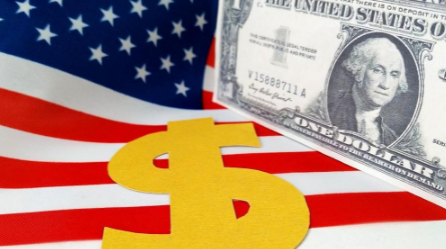 查看详情
查看详情迄今最強“7月降息”呼籲,沃勒公開發聲,美聯儲內部分歧加劇
本周多位有影響力的美聯儲官員發表講話,就是否應該降息以及何時降息產生了日益擴大的分歧,給期待今年進一步放寬政策的投資者帶來了新的不確定性。 7月17日,美聯儲理事沃勒在紐約發表講話時直言不諱地表示,7月利率決議上就應該降息,不應等到勞動力市場惡化後才下調利率。舊金山聯儲主席戴利接受采訪時則重申,年內降息兩次是合理的,並警告稱如果等到通脹完全達到2%的目標再行動,“很可能已經對經濟造成了完全不必要的傷害”。 不過當日稍早,亞特蘭大聯儲主席博斯蒂克和美聯儲理事庫格勒均公開表示,關稅對價格的傳導效應正在顯現,現在放松政策為時過早。博斯蒂克直言,最新的CPI數據“傳遞了一個不同的信息”,暗示通脹可能正處於一個“拐點”。 這些新言論表明特朗普的關稅和財政政策,正讓美聯儲的政策制定者們在降息問題上的分歧越來越大:對於一些鷹派人士來說,現在降低利率是否合適;溫和派主張在不確定的情況下采取觀望態度。 鴿派擔憂經濟受損,對降息持開放態度 一些決策者認為,就業市場呈現疲軟跡象,而過分關註當前的通脹波動可能會錯失支持經濟的最佳時機,從而帶來不必要的風險。 據華爾街見聞,美聯儲理事沃勒是這一觀點的代表人物。在紐約一場活動中,沃勒直接了當表明美聯儲應當在7月降息25個基點。沃勒的核心論點是,美國勞動力市場正顯現出不容忽視的疲軟跡象。他表示: 綜合各種軟硬數據,我看到的是一個瀕臨險境的勞動力市場。 他認為,就業市場出現走弱的風險已經“很大且充分”,足以成為降息的理由。基於他對整體經濟前景的謹慎判斷,沃勒補充說: 經濟仍在增長,但其勢頭已顯著放緩,FOMC的就業任務所面臨的風險已經增加。 當日,舊金山聯儲主席戴利她在接受采訪時也表示,她仍然認為美聯儲今年降息兩次的計劃是“一個合理的展望”。戴利警告稱: 政策制定者不能永遠等下去,因為如果等到通脹明確達到2%的目標,我們很可能已經以一種完全不必要的方式損害了經濟。 不過戴利承認,有跡象表明關稅正在推高商品價格,但她同時對服務業成本的持續通縮趨勢感到鼓舞。 她認為,目前企業仍在承受關稅帶來的成本,消費者支出也保持穩定,這給了美聯儲在通脹向目標邁進時維持利率的空間,但這並不意味著應該無限期推遲降息。 鷹派聲音增強,警告通脹拐點 然而,並非所有官員都持寬松立場。 周四亞特蘭大聯儲主席博斯蒂克在接受媒體采訪時指出,經濟中的潛在跡象表明通脹壓力正在上升,這是一個“令人擔憂的根源”。 他強調,雖然過去幾個月的通脹數據表現良好,但最新的CPI報告可能預示著一個“拐點”的到來。因此,他明確表示: 現在我會選擇等待。 同日,美聯儲理事庫格勒也表達了類似觀點,她認為央行應在“一段時間內”保持利率穩定。她在一場活動中表示: 考慮到就業市場依然穩固,而短期通脹預期和商品通脹因關稅而上升,維持當前的限制性政策立場對於錨定長期通脹預期至關重要。 庫格勒還援引最新數據預測,PCE數據可能在6月份的同比增幅從5月的2.3%升至2.5%。據她分析,由於企業庫存積壓和貿易政策的頻繁變動,關稅對物價的更大影響可能尚未完全體現。 此前華爾街見聞提及,周三紐約聯儲主席威廉姆斯在一場活動上發表類似觀點,認為盡管目前在綜合數據中只看到關稅相對有限的影響,但預計關稅將在今年下半年至2026年期間為通脹增加約一個百分點。並強調: 我預計未來幾個月這些影響將會加劇。維持這種適度限制的貨幣政策立場是完全合適的。 政策前景分化,市場謹慎押註九月降息 官員們的觀點分歧,在美聯儲6月份發布的最新經濟預測中已有體現。 當時的預測顯示,19名與會官員中,有10人預計到今年年底至少會有兩次降息,而7人則認為到2025年都不會降息,反映出內部對通脹前景的不同判斷。 (美聯儲6月SEP中點陣圖) 這種分歧直接影響了市場的政策預期。盡管近期多位官員發表了偏鷹派的言論,但投資者並未完全放棄對降息的希望。市場認為美聯儲在9月政策會議上決定降息的可能性略高於50%。 (9月份降息預期僅略高於50%) 投資者的押註與部分官員的審慎態度之間形成了鮮明對比,凸顯出未來幾個月經濟數據,尤其是通脹和就業數據,對美聯儲最終決策的關鍵影響。 風險提示及免責條款 市場有風險,投資需謹慎。本文不構成個人投資建議,也未考慮到個別用戶特殊的投資目標、財務狀況或需要。用戶應考慮本文中的任何意見、觀點或結論是否符合其特定狀況。據此投資,責任自負。
2025-07-18 -
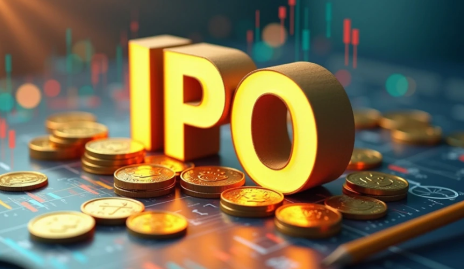 查看详情
查看详情關於火爆的港股IPO,高盛做了個要點問答
據追風交易臺消息,高盛分析師Si Fu等在7月16日的研報中表示,香港IPO市場正經歷顯著復蘇,今年至今已有51家公司上市,募集資金1240億港幣,超過200家公司排隊等候,並在報告中就一些常見問題進行了分析解讀。 展望後市,高盛預計,港股IPO活躍顯著提升市場情緒,叠加低利率環境和全球資金回流提供流動性支撐,預計IPO後市表現持續向好,基石持股30%-50%的公司表現更強,增長潛力是關鍵驅動,A股市場尤其是行業同業也有望受益。 香港IPO市場復蘇源於多重因素。 同時,港交所規則優化增強吸引力,便利高質量企業上市,推動市場活躍。 為什麽A股和ADR尋求雙重上市? 今年5月,證監會主席吳清也表態,要梳理優化境外上市備案機制、流程和相關要素,提高境外上市備案質效。大力支持上海國際金融中心建設和鞏固提升香港國際金融中心地位。 最後,ADR公司則通過雙重上市緩解退市風險。高盛數據顯示,約80%ADR機構投資者已涉足香港市場。若退市,交易可平滑轉移。雙重主要上市可接入南向資金,非次要上市獨享。 高盛認為,活躍IPO提升市場情緒,與指數趨勢和成交速度正相關。企業傾向在高估值期融資,吸引註意並強化信心。今年募集額占總市值和成交不足1%,凈發行額經回購抵扣更小,流動性影響有限。 歷史數據顯示,大型IPO短期影響市場。根據高盛對50宗最大IPO的研究,市場指數在IPO前輕微下行後快速反彈,IPO首日出現激增。南向和主動基金流入強勁,顯示邊際風險偏好改善。 報告顯示,香港IPO吸引多樣投資者,包括對沖基金、共同基金、養老基金、主權基金和散戶。 散戶興趣創多年高點。高盛指出,今年需求-供給比平均9%,低於過去五年25%,反映公眾風險偏好改善。 高盛分析稱,2024-2025年港股IPO後市平均首日回報10%,首月17%,三個月內41%,遠超此前五年的10%、11%和10%。 對A股和行業同業的溢出效應 行業同業也短期受益。報告顯示,在香港有新上市公司的行業,其同業在隨後一周通常跑贏市場。11個MSCI中國行業中有8個在同業上市後一周獲得正相對回報,但這種效應通常短暫,在隨後一個月逐漸消失。 高盛估計,目前約1340億美元被動資金追蹤包含中國股票的MSCI基準指數,恒生指數和恒生科技指數分別有280億和240億美元資金追蹤。 主要上市股可接入南向資金。高盛指出,主要上市(而非二次上市)滿足條件後可納入南向交易,歷史證據顯示南向買盤可持續數月。已有11家雙重主要上市ADR被納入南向交易,南向持股比例在納入後一年內增至7%-16%。 高盛認為,市場恢復利好港交所和中國離岸經紀商增長。新股在熱門行業如消費、醫療和技術需求更高,後者年內表現最佳,消費股三月後回報最高。
2025-07-17

